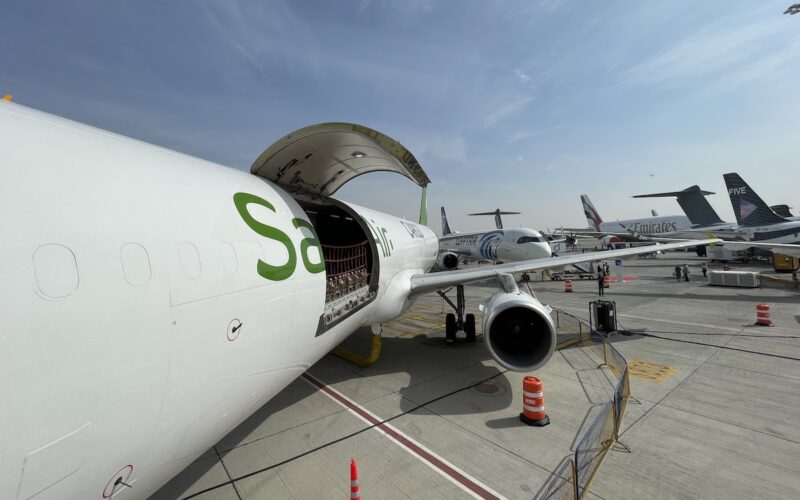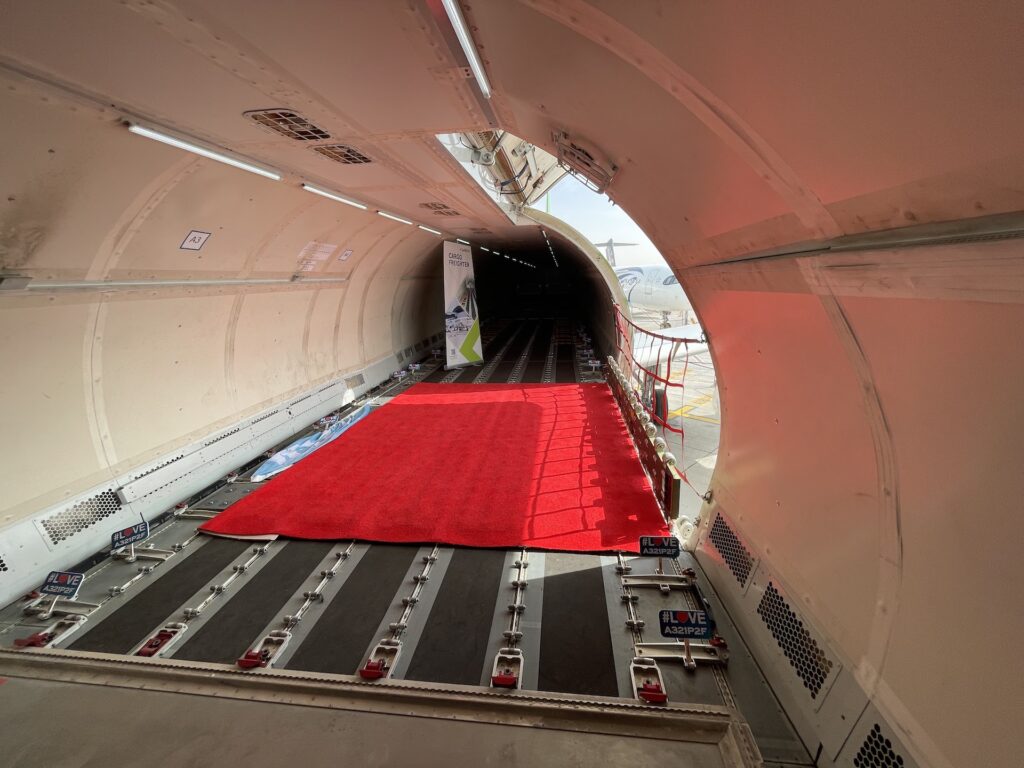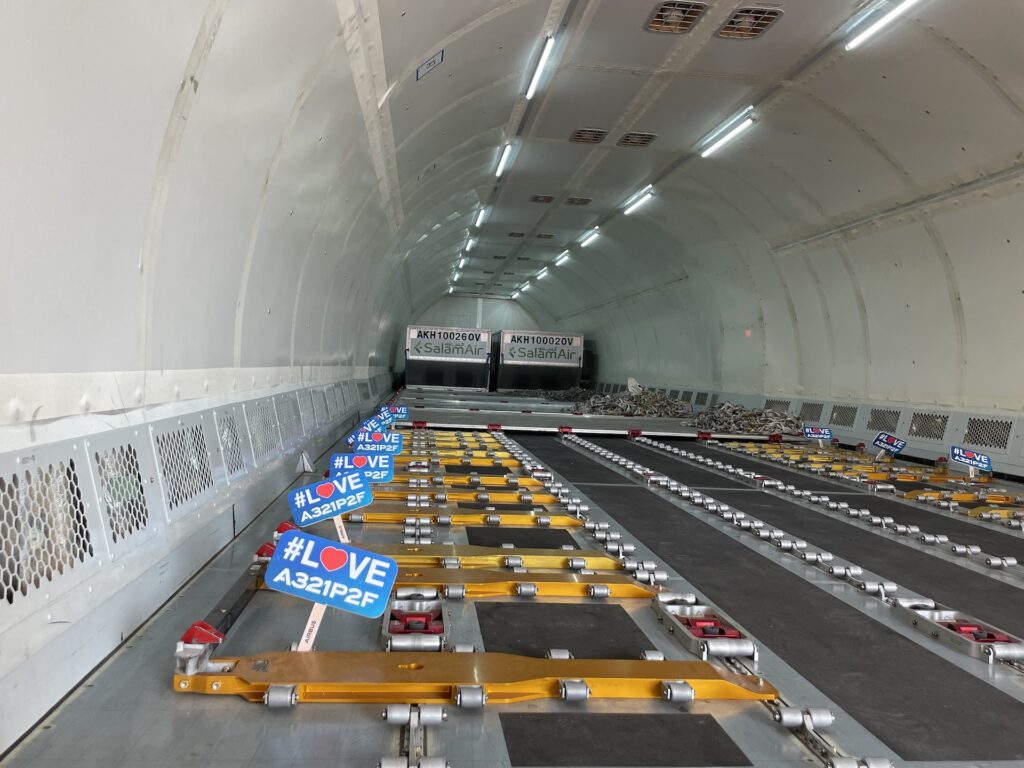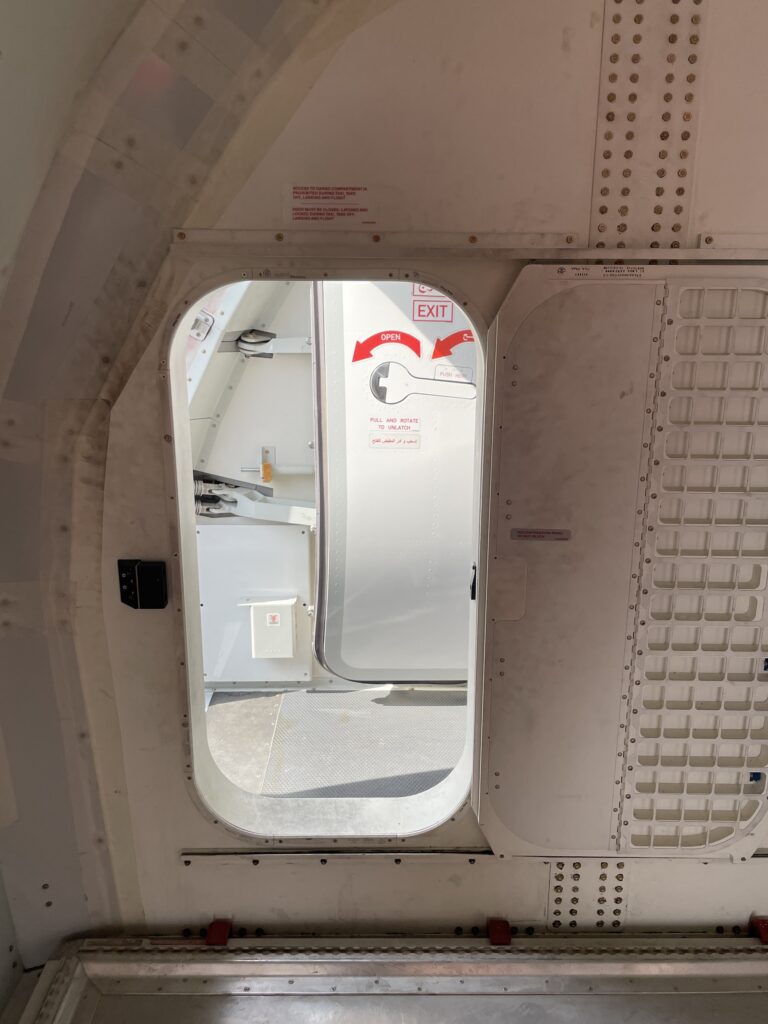Spectacular flight displays, a string of aircraft orders and even an eye-catching, freshly painted Dreamliner showcased by the Middle East’s newest carrier made headlines at the most recent edition of the Dubai Airshow, which took place in November 2023.
Also on static display, but keeping a markedly lower profile, were two aircraft that embody one of the hottest trends in the market right now.
The presence of not one, but two Airbus A321 Passenger to Freighter aircraft at such a major air show can be seen as a sign of the interest this category of aircraft is attracting in the industry.
AeroTime even had the chance to jump on board of one of these planes, operated by the Omani carrier Salam Air, and take a look around.
Passenger to Freighter aircraft, or “P2F” in industry parlance, are aircraft originally built for the passenger market, often serving quite a few years as airliners, which have undergone a thorough transformation process to turn them into dedicated air freighters.
In the last five years, this segment of the market has not only seen double-digit growth, but a flurry of activity from the major original equipment manufacturers (OEMs) and a whole ecosystem of specialized MRO (Maintenance, Repair and Overhaul) firms that carry out this transformative work.
The COVID-19 pandemic was a major accelerating factor for the P2F conversion industry. When the near total cessation of passenger flights coincided with a sudden jump in air freight demand, many operators looked at the possibility of repurposing part of their suddenly idle airliner fleets.
In an article published on July 2023, Gediminas Ziemelis, Chairman of Avia Solutions Group is also a major P2F operator through its SmartLynx subsidiary, detailed the extent of the cargo market boom during the pandemic, which saw rates essentially doubling.
The industry responded by increasing capacity. In the article, Ziemelis, quoting industry data, explained how the number of P2F aircraft conversions is expected to peak at 180 per year in 2025, up from approximately 70 per year before the pandemic.
But this dramatic capacity ramp up, plus the stabilization and then drop in air freight demand and rates following the pandemic has led many to question whether the growth of the P2F industry can be sustained for much longer.
“There is no oversupply in the market at this moment,” explained Jordi Boto, CEO at Elbe Flugzeugwerke (EFW), one of the world’s major players in the global market for P2F conversions. “The pandemic accelerated some trends that were already there.”
A long-time partner of Airbus, which owns a 45% stake in the company, EFW has nine MRO facilities around the world where it performs the conversion from passenger to freight aircraft.
Boto named three major factors driving the P2F market, all of them likely to continue over an extended period of time.
The first and main driver, according to Boto, is demand for the replacement of old fleets of Boeing 737 Classic aircraft as well as B767 and 757 freighters.
Boeing traditionally held a dominant position in the market for freighter aircraft, but these models, which are still the backbone of many a cargo operator, are beginning to show their age.
In 2016 Boeing introduced the Boeing 737-800 BCF (“Boeing Converted Freighter”), the freight conversion of its best-selling 737-800 airliner and, while the type has done well commercially so far, the other OEMs are ready to challenge its hold on the market.
To contest the narrowbody freighter market, Airbus, which, until recently did not really have an aircraft in this category, launched the A320 and A321 P2F versions of its popular aircraft family. This opened the P2F path to a large pool of active A320ceo family aircraft that are aging and being retired from passenger service.
In this regard, Boto pointed out that the rate of conversions could slow down due to the supply constraints currently experienced by the industry, as many airlines opt to retain older airplanes in response to recovering passenger demand, rather than converting them into freighters.
“We started looking at air cargo operations quite a few years ago as it was the natural path of growth for the airline, but it is only when an aircraft like the Airbus A321 P2F became available that we decided to jump in,” explained Edvinas Demenius, Chief Commercial Officer at Riga-based operator SmartLynx. “Until then the narrowbody freighters that were in the market were mostly versions of the Boeing 737 Classic series or the Boeing 757, old aircraft. But as a major Airbus operator, the A321 offered commonality with the rest of our fleet. It has almost the same payload capacity as a Boeing 757, but it consumes 30% less fuel.”
As of January 2024, it has 11 of the type in its fleet and is awaiting the arrival of three more shortly (bringing the total fleet to 68 aircraft).
Embraer also launched its own P2F program for its E190 and E195 aircraft at the Farnborough Airshow in 2022.
This move arrived at a time when the Brazilian OEM was in the middle of a sales campaign pitching its latest generation of fuel-efficient E2 jets to existing E-Jet operators. As airlines start switching to the new E190 and E195 E2 jets, some of the older airframes are likely to become P2Fs as well.
At least one E-Jet operator, Brazilian airline Azul, did not wait for Embraer’s move and transformed several of its E190s into freighters in 2021 in collaboration with engineering firm LHColus Technologia, also from Brazil.
The conversion of these aircraft, which the Brazilian carrier called “Class F freighter” was carried out in response to the needs of Azul’s air cargo division, which serves hundreds of cities across Brazil, mostly performing courier services, predominantly e-commerce deliveries.
This phenomenon is not exclusive to Brazil. Both Boto and Demenius agreed that increased demand for express deliveries is another major driver of the P2F market.
Demenius acknowledged the market is not as tight as it was a couple of years ago but said the continued growth of ecommerce and delivery services has led to narrowbody cargo aircraft to be in higher demand.
Unlike the widebody, long-haul freight market, where both Boeing and Airbus offer factory-new purpose-built aircraft such as the A350F or the new B777-8F, demand for narrowbody freighters is met through airliner conversions.
Another aspect that differentiates the widebody and narrowbody markets, according to Boto, are the longer lead times of the former. EFW is also active in the widebody market, dealing with aircraft such as the A330.
This is not just due to the completion time (three months for a narrowbody versus six for a widebody) but also the dynamics of the market.
Since narrowbody P2F aircraft require much lower capital commitments, the market is more prone to shorter term, more speculative moves by a diversity of operators. Whereas the much higher capital commitments of widebodies limit the market to a handful of large operators that plan their fleet commitments at least five to 10 years in advance.
Boto also highlighted another factor driving demand for cargo aircraft, particularly for widebody aircraft. It has been anticipated that within a decade there will be less belly capacity in regular airliners than there is at present. This is due to parts of the long-haul passenger market, particularly in the North Atlantic, being taken over by extended range narrow body aircraft, such as the A321LR and XLR, with less belly cargo capacity.
Production cycles in the industry are long. For example, capacity at EFW is fully booked until 2026. However, this is something that has already been anticipated by the big players in the cargo and logistics industry, leading them to invest accordingly.




